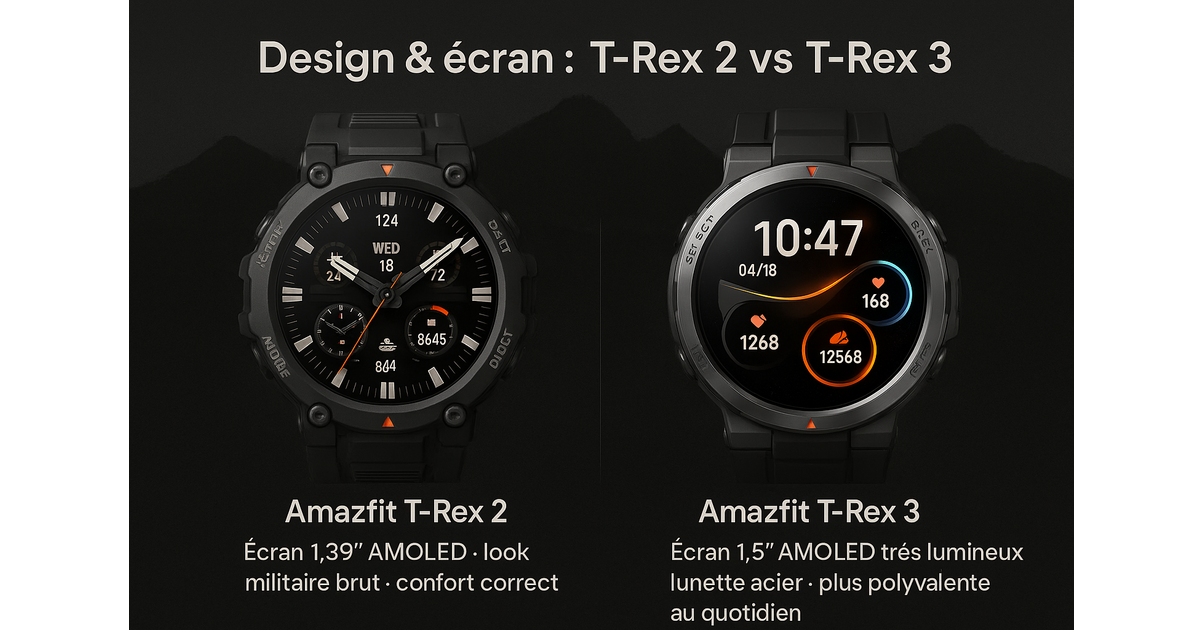Table of Contents
3. Sensors, GPS, autonomy: same arsenal, not the same job
Technically, the two watches share an impressive base: Integrated GPS + 6 sensors (optical cardio, accelerometer, gyroscope, compass, altimeter/barometer, thermometer), with 200 m waterproof. It’s how this data is used that changes everything.
Sensors & terrain reading: the playing field of the Rangeman GPR-H1000
Side GPR-H1000the DNA remains that of a real Outdoor Rangeman. The watch highlights:
- profiles trekking, trail, mountain biking, hikingopen water, swimming pool, gym;
- essential information in open terrain: altitude, height difference, pressure, temperature, orientation, speed, etc.
It is used to constantly keep an eye on what the land is doing And what your body is doing inside. You’re not trying to optimize your VMA, you’re trying to avoid finding yourself lost or out of luck at the wrong time.
Sensors & training monitoring: the GBD-H2000 powered by Polar algorithms
Side GBD-H2000same sensor base, but different logic: objective, decipher your training and recovery. Casio has integrated a whole suite of Polar algorithms directly into the watch:
- Running Index (VO₂max estimation + running performance),
- Cardio Load & Cardio Load Status (cardio load session by session + trend over time),
- Energy used (fat/carbohydrate/protein distribution during exercise),
- Nightly Recharge (quality of your recovery during sleep).
There Rangeman GPR-H1000 gives you a good view of your effort and the terrain. There G-Shock GBD-H2000 goes further: it puts words and scores on the state of your cardio systemif you charge too much, not enough, or just enough. It’s the difference between “I have an average HR” and “I know if I’m progressing or if I’m overworking”.
GPS autonomy: what the H1000 and H2000 really give
On the pure GPS part, Casio announces very close figures for the two watches. In activity mode with GPS + cardio, G-Shock RANGEMAN GPR-H1000 And G-Shock GBD-H2000 revolve around:
- ≈14 h in HIGH RATE mode (high frequency continuous reception),
- ≈16 h in NORMAL mode (standard continuous reception),
- ≈19 h in LONG mode (intermittent GPS reception to extend battery life).
In fashion watch alonecardio cut, both can hold approximately 2 monthsand until 23 months in energy saving mode, from a full charge, excluding solar input.
In reality: for an ultra, a big day hike or a tight GPS weekend, both do the job. The difference is more about what you do with the data than on raw autonomy.
USB + solar combo: the G-Shock safety net
Both watches use a base USB + solar assisted : you recharge by wire when you want to reset everything, but as long as there is a minimum of light, the “watch” function remains provided by solar power, even when the battery is low.
Result: you can treat them like real G-Shocks – you live, you move, you forget them. As long as you don’t do 15 ultras in a row, you don’t spend your life looking for a catch.




